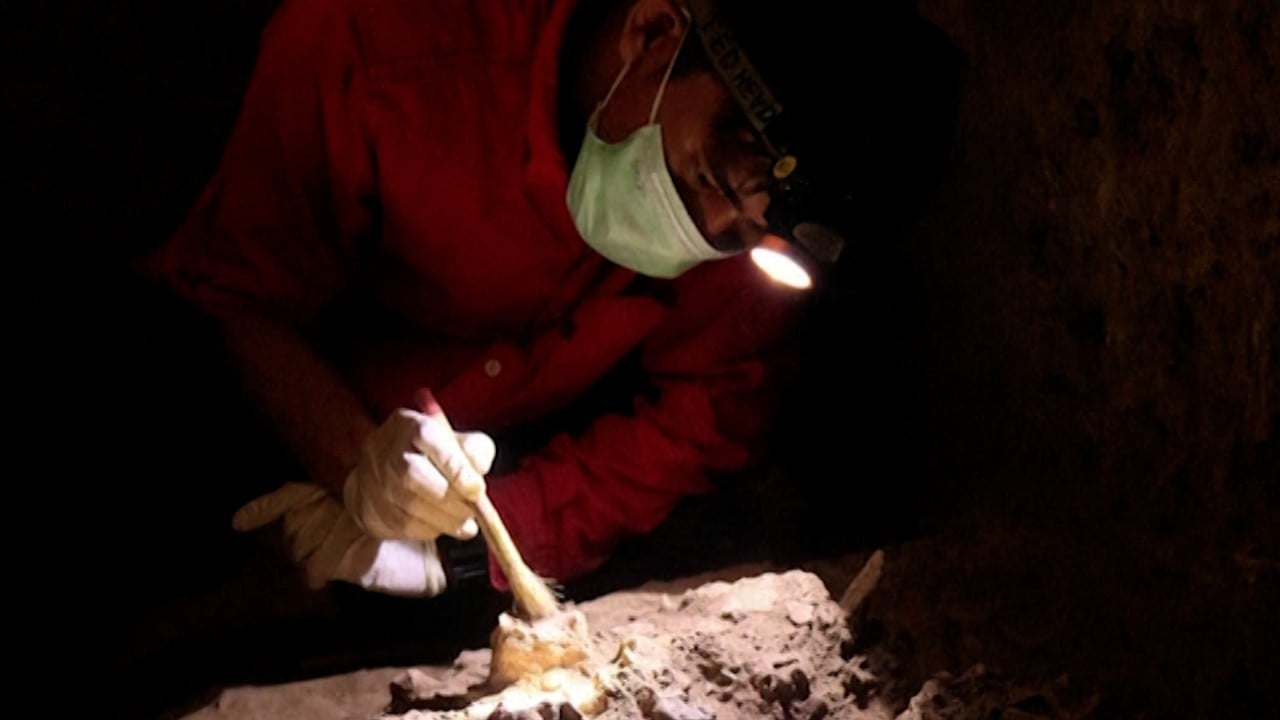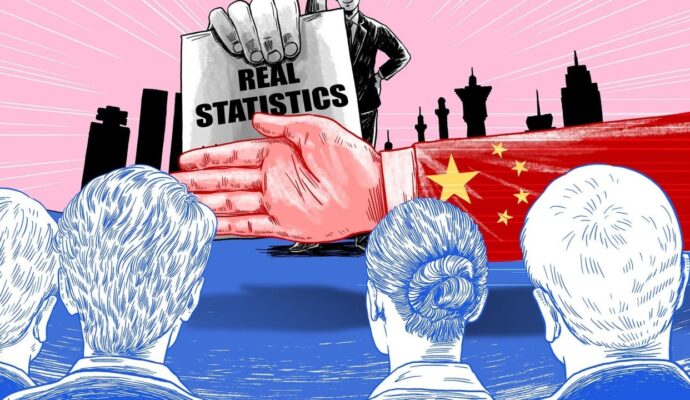The findings showed that in both cases, it was the person’s mother who was from the West, which differed from the academics’ previous assumption.
It means that the two individuals were more than likely the offspring of local men and “exotic” women from the West – called “Hu Ji” in Chinese classic literature.
Wen Shaoqing, an associate professor at Fudan University in Shanghai and an author of the study, said that with the genome information available, they could not pinpoint the exact location of “the West”, which in modern terms usually refers to Europe.
So for the study, they used a broader scope with the West mainly referring to the area west of Central Asia in the Eurasian continent, while the East referred to the region of East Asia.
Chinese archaeologists find link between pentagram and music in ancient texts
Chinese archaeologists find link between pentagram and music in ancient texts
Dunhuang, in the west of modern-day Gansu province, was part of the Hexi Corridor, a narrow, 1,000km (620-mile) passage west of the Yellow River’s Ordos Loop.
Cross-continental material and cultural exchange along the Hexi Corridor are well documented, including East Asian millet and painted pottery, West Asian wheat and barley, bronze metallurgy, and domesticated animals – yet little is known about the population dynamics there.
“This is an interesting study that fills the knowledge gap,” said Jin Xin, deputy director of the Institute of Precision Health Research at BGl-Research, a Chinese genomics research centre. Jin was not involved in the study.
The research, published by the peer-reviewed journal Science Bulletin on December 16, was a joint project conducted by researchers from China’s Fudan University, Xiamen University, and the Gansu Provincial Institute of Cultural Relics and Archaeology.
“Silk Road prosperity not only facilitated economic and cultural exchange between East and West but also contributed to the growth of transnational population movements,” the paper said.
“The Hexi Corridor stood at the forefront of China’s interaction with world civilisations at that time, so naturally, I hoped to answer some scientific questions, such as when did the population admixture occur there?” Wen said.
The research team analysed the human genome data of 30 individuals found in different parts of the Hexi Corridor from three time periods: before the Han dynasty, from the Han dynasty to the Tang dynasty, and the modern era.
Of those, 17 were from the central Hexi Corridor, dating from the Han dynasty (202BC-220AD), while the other 13 came from the western area, dating from the Cao-Wei dynasty to the Tang dynasty, unearthed from Dunhuang’s Foyemiaowan cemetery. That was where the two multiracial people were found.
“We can determine the age information of ancient skeletons via a technique known as radiocarbon dating, and if we can obtain the DNA information they carry, we can further understand how these genomes change over time, which can help us examine the connections between certain historical events and these genetic changes,” Wen said.
Mixed Eurasian ancestry was “unsurprising” to some degree, Wen said, because Dunhuang was an international hub, with evidence of this already seen in the Dunhuang Grottoes art, which shows merchants from the West.
But this study was proof. Wen said that by looking at the X chromosomes of the two multiracial individuals, the team could see that their mothers came from the western part of the Eurasian continent – also suggesting their mothers were “Hu Ji”.
Additionally, through the DNA analysis of modern populations, the team found that residents in the Hexi Corridor today generally have a genetic make-up that includes West Eurasia, with that ancestral component accounting for about 5-20 per cent.
The present Hexi Corridor includes populations such as Gansu Han Chinese, Dongxiang, Baoan, and Uygur.
The scientists speculate that a large-scale population admixture occurred around 600-1000 years ago, during a period when the most significant historical event was the expansion of the Mongol Empire.
At that time, a large number of military and civilian populations migrated from the West to the Hexi Corridor.



